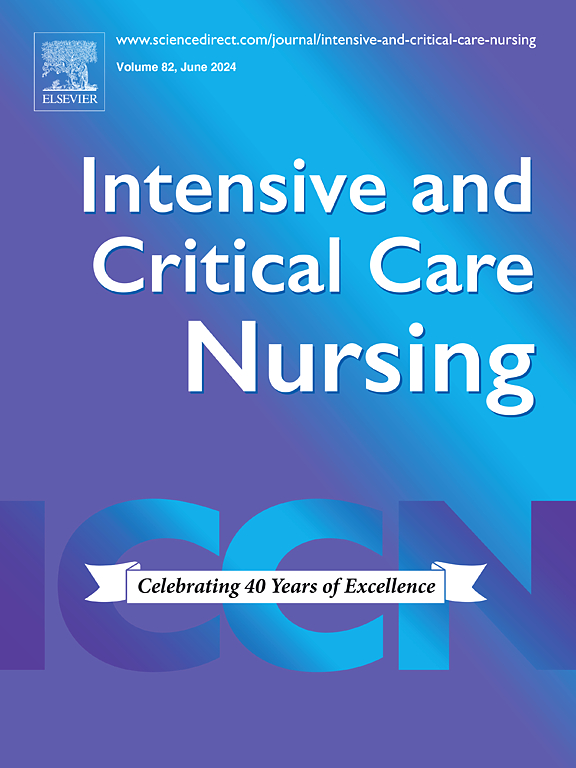在澳大利亚昆士兰实施基于共识的经皮冠状动脉介入术后当日出院临床路径的障碍和促进因素
IF 4.7
2区 医学
Q1 NURSING
引用次数: 0
摘要
目的探讨择期经皮冠状动脉介入治疗(PCI)患者采用基于共识的当日出院(SDD)临床指南的障碍和促进因素。方法对澳大利亚昆士兰州公立医院的6个心导管室进行定性研究。在2024年7月至10月期间,对临床医生、患者和护理人员进行了半结构化访谈。采访被记录下来并记录下来。在根据理论领域框架(TDF)演绎映射主题之前,进行归纳内容分析。结果共访谈22人(医生[n = 10],护士[n = 8],患者[n = 2],护理人员[n = 2])。六个领域,包括知识、社会/职业角色和身份、环境背景和资源、对结果、记忆、注意力和决策的信念以及对能力的信念,与影响实施的因素密切相关。调查结果揭示了实施的主要障碍,包括后勤(如地理因素)、专业(如抗拒变革)和不利于SDD的医院报销模式。主要的驱动因素是有效的领导、医院之间的基准、医院间的咨询和合作、指定的倡导者以及针对临床医生、患者和护理人员的有针对性的教育会议。结论采用这一基于共识的SDD临床指南具有多因素和相互关联的影响。识别跨各种TDF领域的障碍为开发有效的实现策略以促进SDD的实现提供了机会。对临床实践的启示本研究强调了实施SDD的多方面方法的必要性。公共卫生政策和组织的领导者必须考虑一系列相互关联的影响,以便有效实施和持续遵守。本文章由计算机程序翻译,如有差异,请以英文原文为准。
Perceived barriers and facilitators to implementing a consensus-based same-day discharge post-percutaneous coronary intervention clinical pathway in Queensland, Australia
Objectives
To identify perceived barriers and facilitators to an intended adoption of aconsensus-based same-day discharge (SDD) clinical guideline for patients undergoing elective percutaneous coronary intervention (PCI).
Methods
This qualitative study was conducted in six cardiac catheterisation suites of public hospitals in Queensland, Australia. Semi-structured interviews were undertaken with clinicians, patients, and carers between July and October 2024. Interviews were recorded and transcribed. Inductive content analysis was performed before themes were mapped deductively against the Theoretical Domains Framework (TDF).
Results
A total of 22 participants (doctors [n = 10], nurses [n = 8], patients [n = 2], and carers [n = 2]) participated in interviews. Six domains, including knowledge, social/professional role and identity, environmental contexts and resources, beliefs about consequences, memory, attention, and decision-making, and beliefs about capabilities, were strongly related to the factors that influenced the implementation. The findings revealed perceived main barriers to the implementation, including logistical (e.g., geographical considerations), professional (e.g., resistance to change), and hospital reimbursement models that unfavoured SDD. The main drivers were effective leadership, benchmarking among hospitals, inter-hospital consultation and collaboration, having a designated champion, and targeted education sessions for clinicians, patients, and carers.
Conclusion
Findings suggest that adopting this consensus-based SDD clinical guideline has multifactorial and interrelated influences. The identification of the barriers across various TDF domains provides opportunities to develop effective implementation strategies to facilitate SDD implementation.
Implications for clinical practice
This study highlights the need for multifaceted approach to implementing SDD. Leaders in public health policy and organisations must consider a range of interconnected influences for effective implementation and sustained adherence.
求助全文
通过发布文献求助,成功后即可免费获取论文全文。
去求助
来源期刊

Intensive and Critical Care Nursing
NURSING-
CiteScore
6.30
自引率
15.10%
发文量
144
审稿时长
57 days
期刊介绍:
The aims of Intensive and Critical Care Nursing are to promote excellence of care of critically ill patients by specialist nurses and their professional colleagues; to provide an international and interdisciplinary forum for the publication, dissemination and exchange of research findings, experience and ideas; to develop and enhance the knowledge, skills, attitudes and creative thinking essential to good critical care nursing practice. The journal publishes reviews, updates and feature articles in addition to original papers and significant preliminary communications. Articles may deal with any part of practice including relevant clinical, research, educational, psychological and technological aspects.
 求助内容:
求助内容: 应助结果提醒方式:
应助结果提醒方式:


